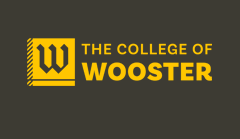Abstract
This study will examine how government structure and party control affect social and economic measures of individual well-being. Government configuration is defined as having a unified or divided government. Unified government is when one party controls the executive branch and both houses of the legislative branch, and divided government is when multiple parties control the branches. Party control is when one party has political dominance over another party in that government. I hypothesize that a divided government will be associated with an increase in poverty (H1) and crime levels (H2) but a decrease in high school graduation rates (H3). I also hypothesize that Democratic party control will be associated with an increase in poverty (H4) and high school graduation rates (H6) but a decrease in crime levels (H5). To test these hypotheses, I will conduct a large n study of all 50 states between 2012-2022 and use an OLS regression analysis to interpret the data. Unfortunately, only two hypotheses were confirmed (H5-H6). The data indicated that a divided government was associated with decreased poverty and crime levels and increased high school graduation rates. The data also revealed that Democratic party control was associated with a decrease in poverty and crime levels and an increase in high school graduation rates.
Advisor
Sorensen, Ashley
Department
Political Science
Recommended Citation
Huntington, Benjamin N., "Red, Blue or Purple: An Analysis of Government Configuration and Party Control and Its Impacts on Poverty, Crime, and High School Graduation Rates" (2024). Senior Independent Study Theses. Paper 11054.
https://openworks.wooster.edu/independentstudy/11054
Disciplines
American Politics | Economic Policy | Education Policy | Health Policy | Infrastructure | Other Public Affairs, Public Policy and Public Administration | Policy Design, Analysis, and Evaluation | Public Policy | Social Policy
Publication Date
2024
Degree Granted
Bachelor of Arts
Document Type
Senior Independent Study Thesis
© Copyright 2024 Benjamin N. Huntington
